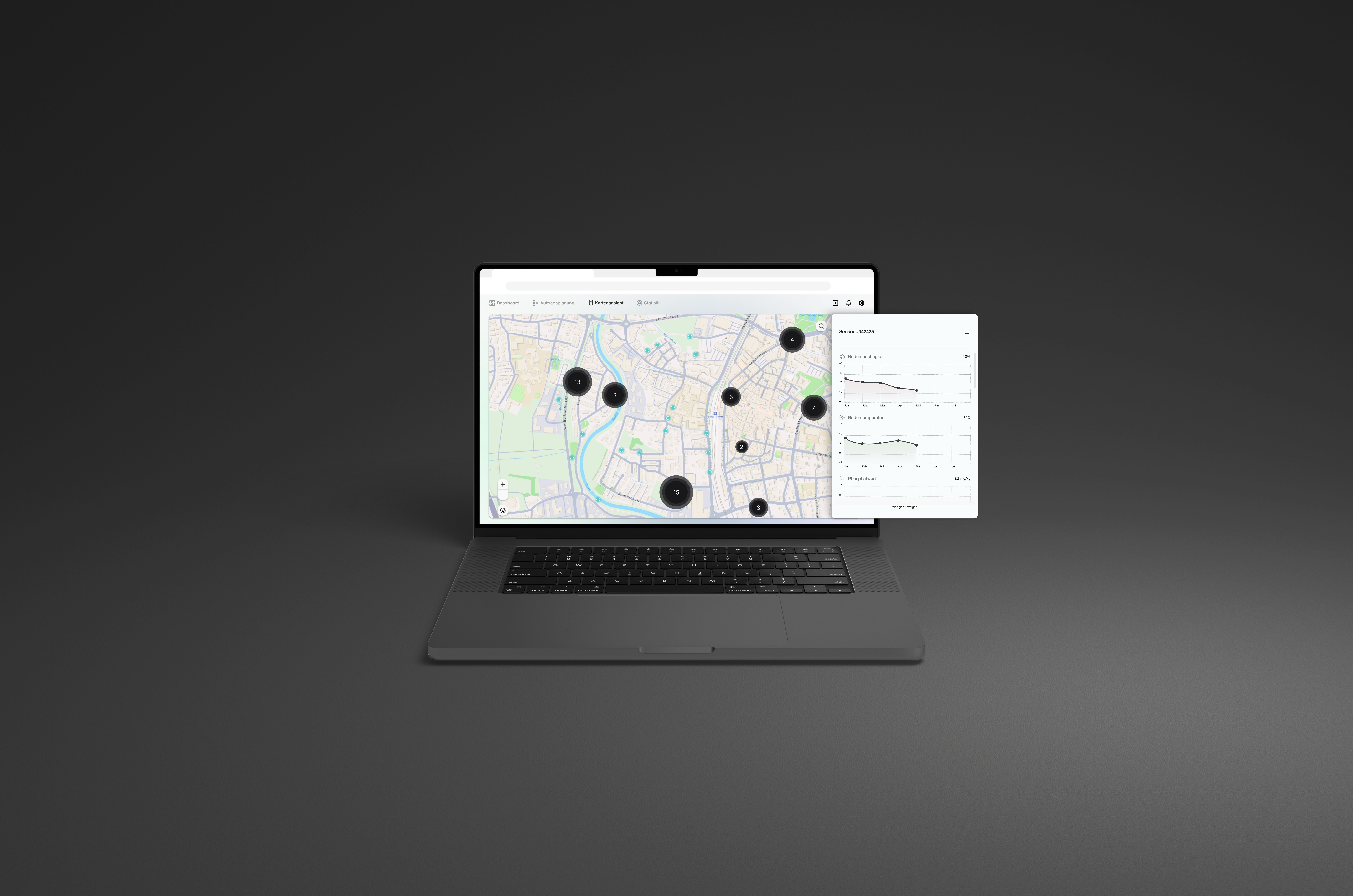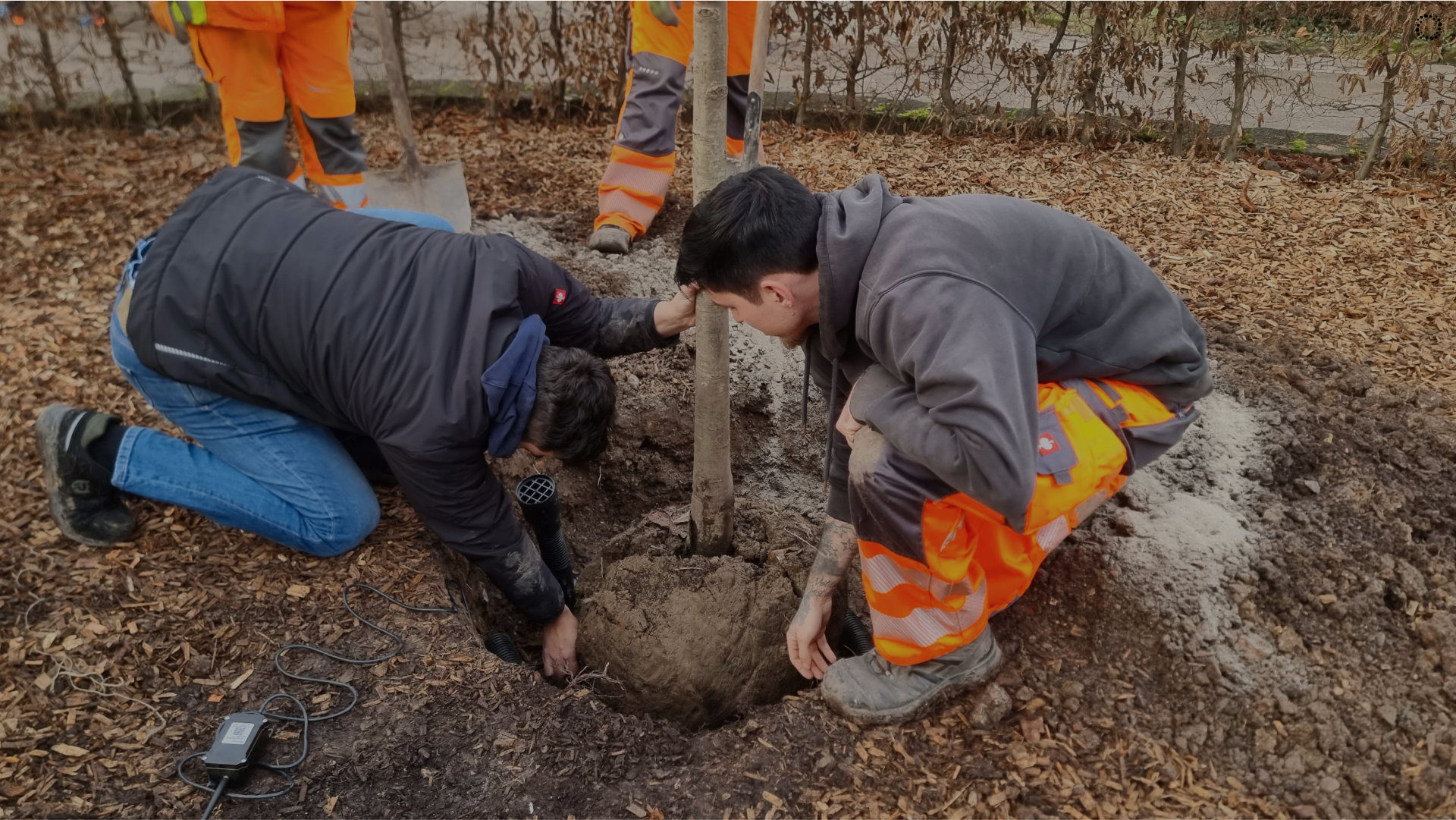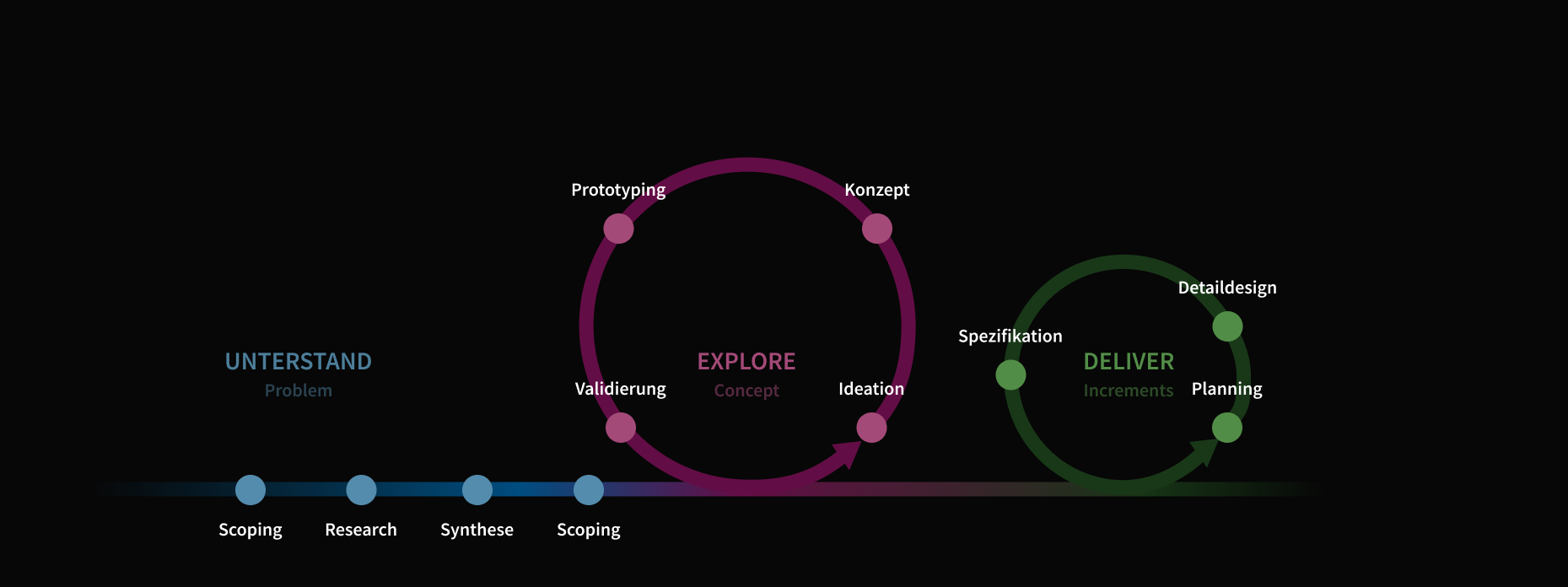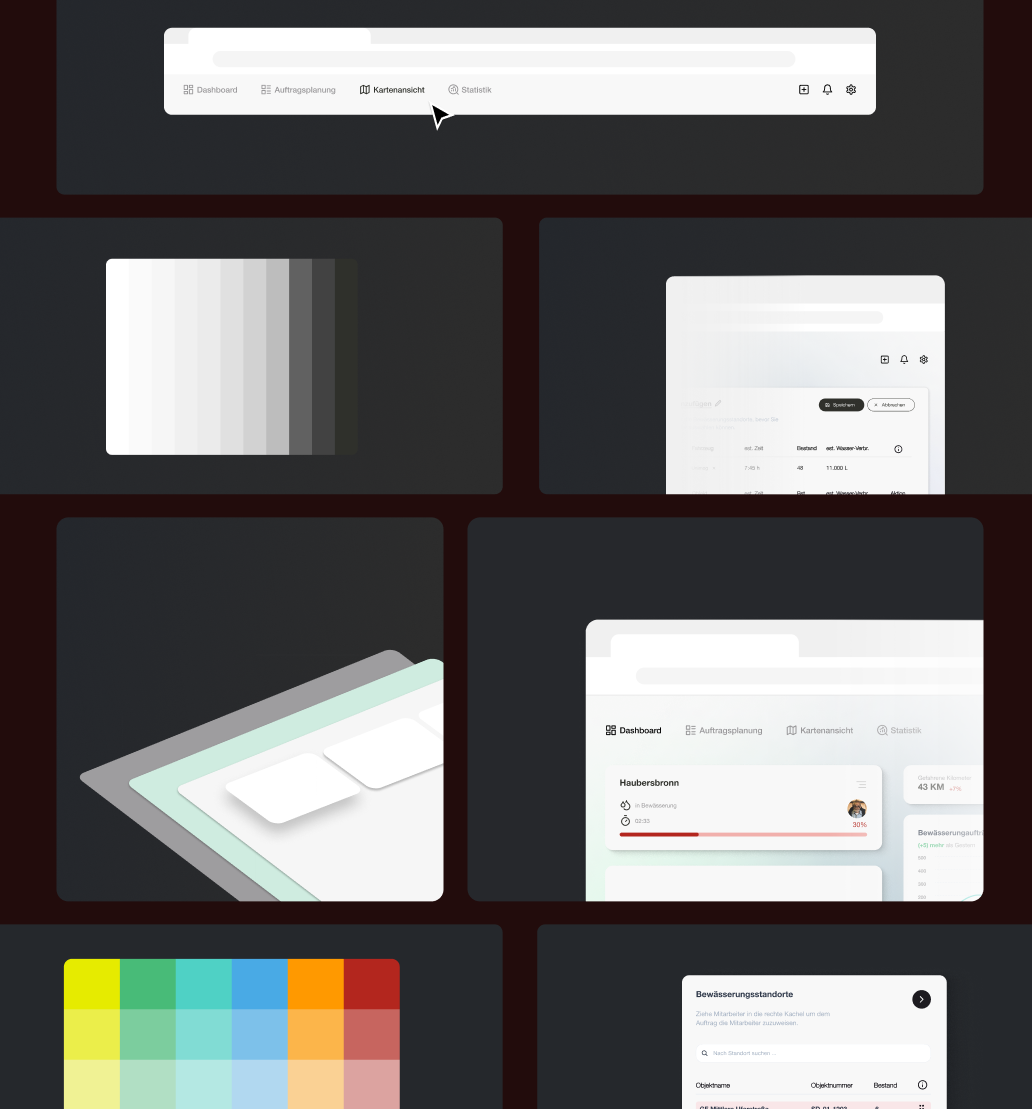
In the face of advancing climate change, cities are challenged with maintaining their green spaces with increasingly scarce resources. The "Hydrologic" project, developed as a bachelor's thesis in cooperation with the Central Services of Schorndorf, is an answer to this problem.
We designed and implemented a holistic IoT ecosystem for intelligent irrigation management. By using soil sensors that measure moisture and temperature, our system enables a needs-based and resource-efficient care of urban plants. The solution consists of a web application for management to handle planning and analysis, and a mobile app that provides field staff with optimized routes and clear work instructions.
PROBLEM IDENTIFICATION
Environmental analysis, Brainstorming, Problem definition
RESEARCH
Market research, User research, Shadowing, User interviews
CONCEPT DEVELOPMENT
Crazy 8, Brainstorming, Scenario development
REQUIREMENTS DEFINITION
User stories, Persona creation, Swimlane diagrams
UX DESIGN
Information architecture, User flows, Wireframing
UI DESIGN
Low fidelity prototypes, High fidelity prototypes
STRATEGY
The core strategy was to create a data-driven system that moves away from inefficient, experience-based irrigation towards precise, needs-based actions. By defining the core problems through environmental analysis and brainstorming, we aimed to develop a Minimum Viable Product (MVP) that provides clear value to both municipal planners and field workers. The creation of personas and user stories ensured that the final concept would directly address the pain points of its target users and optimize their entire workflow.

RESEARCH INSIGHTS
The research phase focused on gaining a deep understanding of the existing processes and challenges. Through market and user research, we analyzed existing solutions and identified key opportunity areas. Direct user interviews with municipal employees and shadowing them on the job provided invaluable, firsthand insights into their daily routines, frustrations, and needs. This qualitative data was crucial for defining a solution that would be not only technologically advanced but also genuinely useful and accepted by the staff.

APPROACH
Our approach followed a structured design process from start to finish. After the initial Problem Identification and Research, we moved into Concept Development using creative methods like Crazy 8s and scenario development to explore potential solutions. We then solidified the project's scope in the Requirements Definition phase by creating user stories and swimlane diagrams. This led to the UX Design, where we established the information architecture and created user flows and wireframes, before finally building out the visual interface with low and high-fidelity prototypes during the UI Design phase.

DESIGN
The design of Hydrologic translates complex data into a clear, actionable, and user-friendly interface. The system's information architecture is structured to provide different levels of detail for managers and field workers. The web-based dashboard for planners offers comprehensive analytics and a heatmap view of the city's green spaces, while the mobile app for gardeners focuses on simplicity, providing optimized routes and clear, step-by-step instructions for each task. The high-fidelity prototype showcases a clean, data-centric design that prioritizes usability and efficiency.

LEARNINGS
This project underscored the importance of a holistic, user-centered approach when implementing smart city solutions. The key takeaways are:
- Shadowing is Irreplaceable: Observing the users in their actual work environment provided insights that interviews alone could never have revealed and was fundamental to the project's success.
- Simplicity Drives Adoption: For a tool to be successfully adopted by municipal workers, it must be significantly easier and more efficient than the existing paper-based or manual process.
- A Full-Stack View is Necessary: A successful IoT project requires more than just good UI/UX. Understanding the entire process—from the sensor hardware and data transmission to the backend logic and user interface—is crucial for creating a robust and coherent solution.







